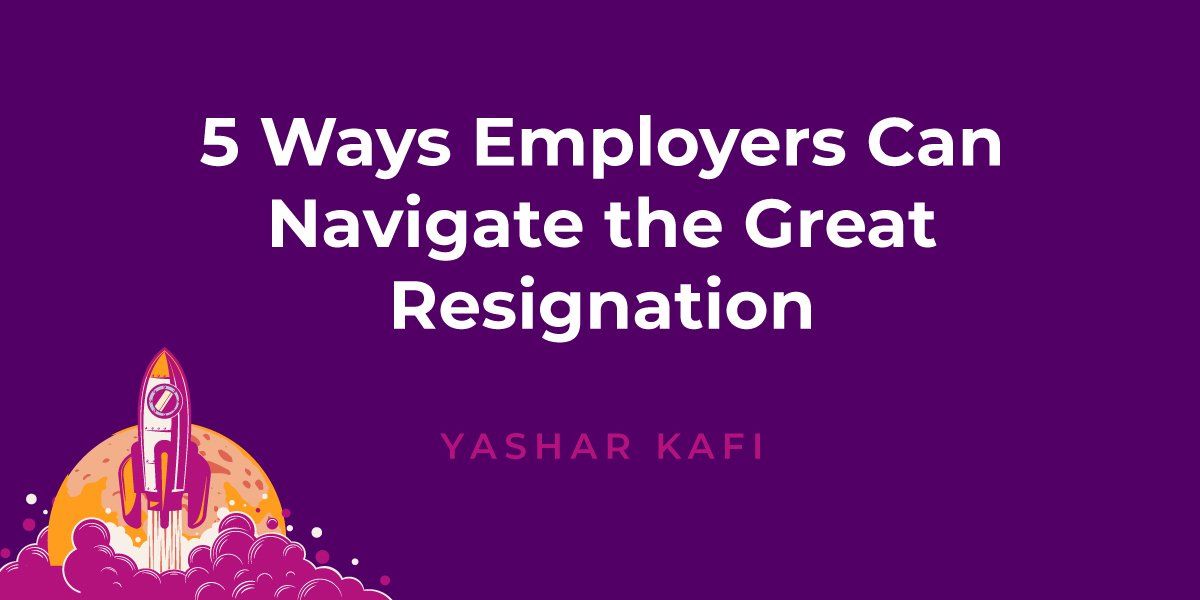5 Ways Employers Can Navigate the Great Resignation
With the Great Resignation of 2021 upon us, seeing a wave of employees jumping ship and switching jobs, you may be tempted to throw up your hands and simply let the tides take you. Don’t!
Instead, consider these five ways to help you navigate this unprecedented era
1. Be Prepared for Change
Employees are no longer happy with the status quo. Employers can no longer stay in their comfort zone and attempt to keep things on an even keel a la the old “If it ain’t broke, don’t fix it” mentality. It’s broken, and it needs fixing—or at the very least, tweaking.
Times are changing. As the leader of your company, you need to be prepared to create a culture that faces those changes head-on and does not blink when it comes to doing whatever is necessary to adapt and eventually embrace those changes as they are (and keep) coming.
2. Conduct Quarterly Reviews
As these changes keep coming and you work to adapt to them, an important part of how successful you will be depends on keeping a close and accurate eye on measuring how you are doing. After all, if the changes you are making to adapt and grow aren’t proving effective with real results, you aren’t accomplishing anything.
To keep an updated pulse on the current climate of your company culture and how you are measuring up, conducting regular reviews (I suggest one review per quarter) will prove priceless. This way of checking in and weighing what is working—and uncovering what is not— is the honesty that will prove to be the catalyst to creating and maintaining a cohesive (and content) workforce.
3. Genuinely Explore and Resolve Issues
While quarterly reviews are excellent in uncovering issues, you have to take the obvious next step in addressing them. Nine times out of ten, the problems that arise will not be easily addressed by the bandaid approach.
These issues will need to be explored in-depth, with conversations that may involve everything from one-on-one meetings between management and their direct employees (with the help of HR facilitation) to round table discussions, think tanks, and more.
Simply put: Your company has to be invested in doing whatever it takes to get to the root of these issues with candid convos, then resolving them.
4. Encourage Innovation and Openness
On the way to resolution—and seeking to maintain employee satisfaction—creating an environment that fosters innovation and encourages openness will get you far.
Employees need to know that they are safe when speaking up. They should not only know it is okay but they should be greatly encouraged to do so. This encouragement to take the initiative and step out with their voices and opinions inevitably encourages innovation—which we all know is the fuel that is the driving force of the future.
This open forum will also allow employees to voice any criticisms of the current culture, enabling you to address these criticisms directly and will let you check back in with the “voicer” once potential solutions have been implemented.
5. Provide Security and Flexibility
As we are still living amid a global pandemic, it is not surprising that jobs and financial security are constantly weighing on everyone’s minds. Employers that provide the peace of mind that working for them means job stability and security places them ahead of the pack.
But what we are also seeing emerging is the strong push for greater flexibility. As workers were perhaps initially frustrated at being pushed out of their physical offices and sent home to work remotely, these same workers have now grown accustomed to (many embracing with great glee) the flexibility of remote work.
Now, employers are experiencing the resistance of workers when the subject of returning to the office is broached. Boos and jeers abound. For this reason, employers who can offer greater flexibility (be it with hours or locale) have a much greater chance of retaining their workforce in this new normal and beyond.




